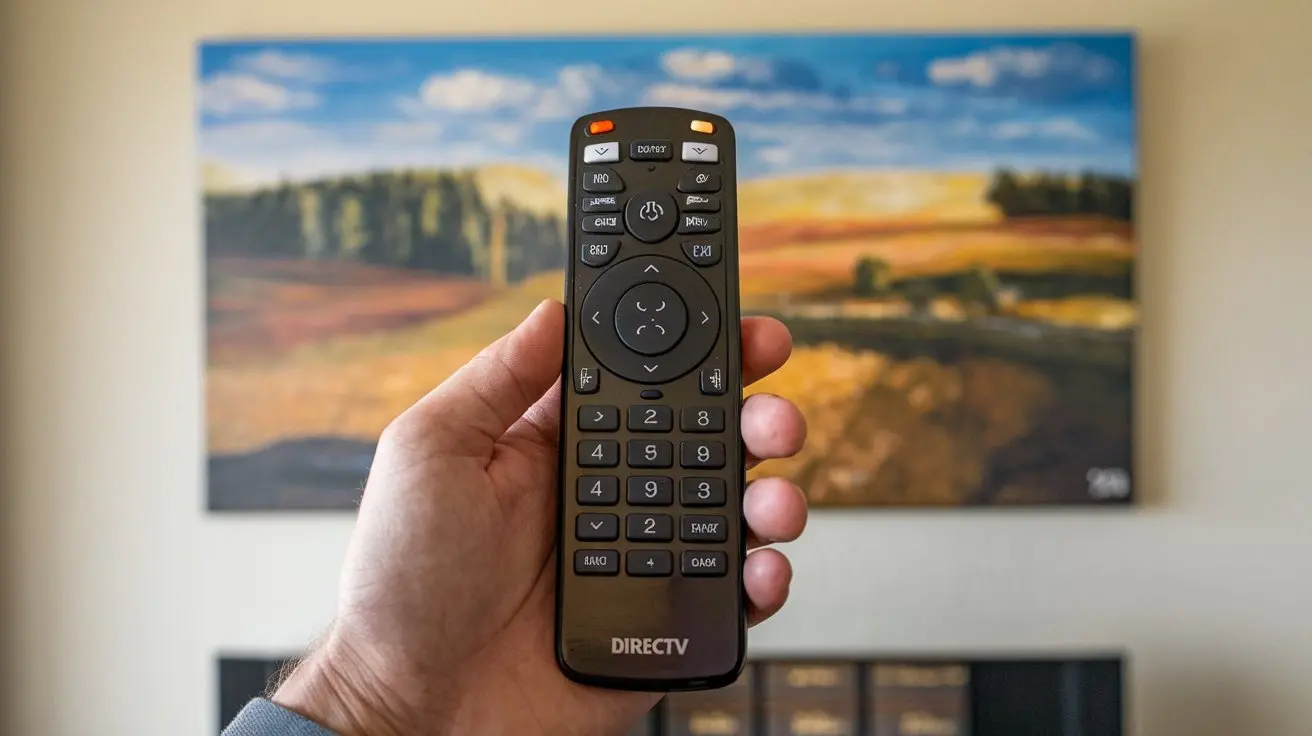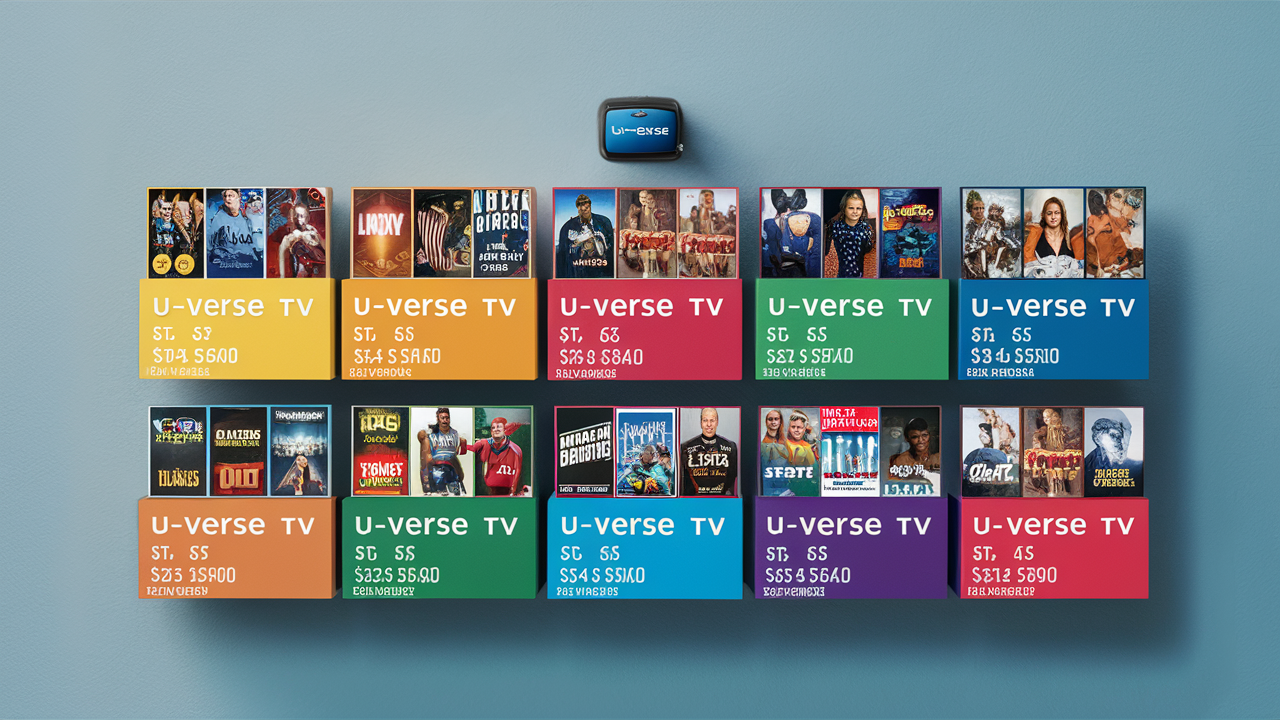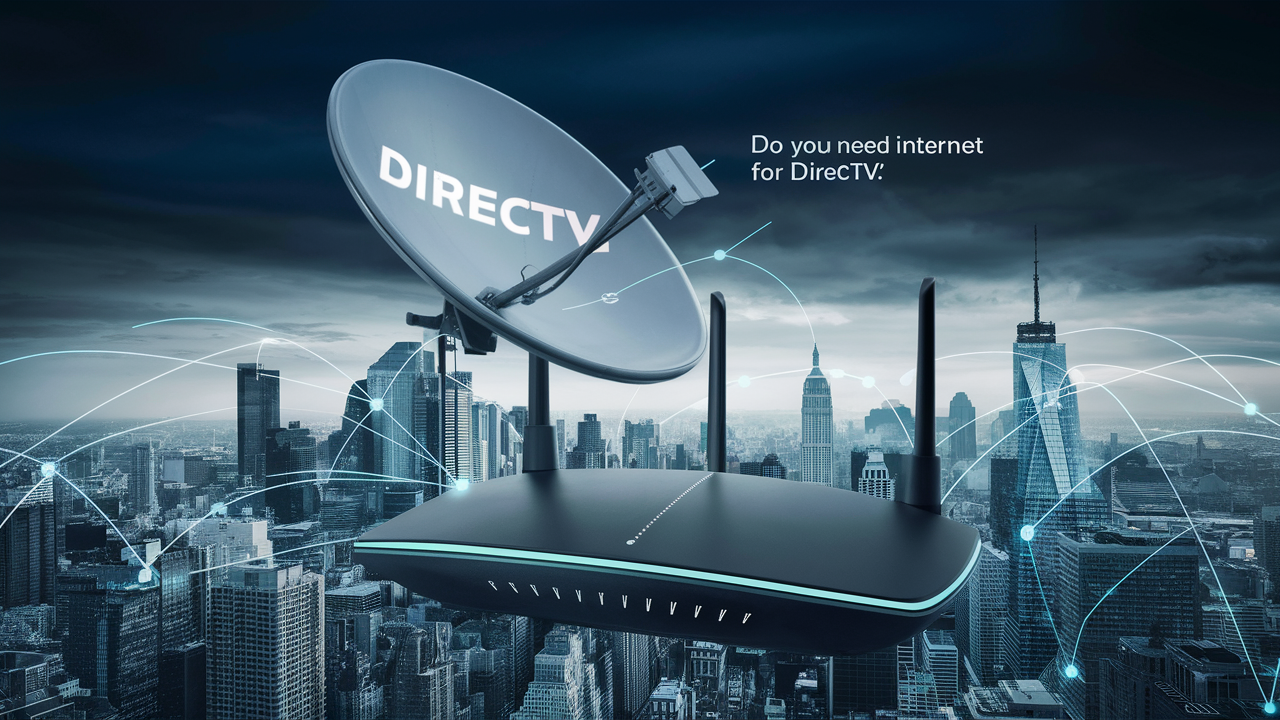Why did AT&T get rid of DIRECTV?

AT&T's strategic divestment from DIRECTV wasn't a sudden decision but a calculated move driven by evolving market dynamics, financial pressures, and a desire to refocus on core telecommunications strengths. This shift aimed to streamline operations and invest in future growth areas.
Understanding the AT&T-DIRECTV Divestment
The question "Why did AT&T get rid of DIRECTV?" resonates with many who observed the significant corporate restructuring. In late 2020, AT&T announced its decision to spin off a majority stake in DIRECTV, merging it with TPG Capital's U.S. DIRECTV operations. This move effectively ended AT&T's control over the satellite television giant it had acquired for a hefty sum in 2015. The rationale behind this significant divestiture was multifaceted, stemming from a confluence of financial pressures, evolving consumer behaviors, and a strategic re-evaluation of AT&T's long-term business objectives. By shedding DIRECTV, AT&T aimed to reduce its substantial debt burden, simplify its corporate structure, and sharpen its focus on its core, high-growth areas like 5G wireless and fiber broadband expansion. This blog post will delve deep into the intricate reasons behind this pivotal decision, exploring the historical context, financial implications, market forces, and the ultimate impact on both AT&T and the now independent DIRECTV.
Historical Context: The AT&T-DIRECTV Acquisition
To fully grasp why AT&T decided to part ways with DIRECTV, it's crucial to understand the circumstances surrounding its acquisition. In 2015, AT&T, then a telecommunications behemoth primarily known for its mobile and landline services, made a bold move to enter the pay-TV market by acquiring DIRECTV for approximately $48.5 billion. This acquisition was envisioned as a strategic masterstroke, aiming to create a bundled offering that combined AT&T's expansive internet and mobile services with DIRECTV's dominant satellite television platform. The goal was to create a more comprehensive entertainment and communication ecosystem for consumers, thereby increasing customer loyalty and reducing churn. AT&T believed that by controlling both the content delivery mechanism and the underlying broadband infrastructure, it could offer a superior, integrated customer experience. This was a period when the traditional pay-TV model was still robust, and the threat of cord-cutting, while present, was not yet as existential as it would become in subsequent years. AT&T saw DIRECTV as a way to diversify its revenue streams beyond its traditional telecom offerings and to compete more effectively against rivals like Comcast, which already possessed a similar integrated model. The acquisition was also seen as a means to gain a significant foothold in the video entertainment sector, which was increasingly becoming a battleground for consumer attention and spending.
The Business Case for the Split
The decision to divest DIRECTV was not made in a vacuum. Several interconnected factors contributed to AT&T's strategic pivot. These factors can be broadly categorized into financial performance, market shifts, strategic realignment, and regulatory considerations.
Financial Performance and Debt
One of the most significant drivers behind the divestiture was AT&T's substantial debt load. The acquisition of DIRECTV, coupled with other major acquisitions like Time Warner, had saddled AT&T with billions of dollars in debt. By 2020, AT&T's total debt had ballooned to over $150 billion, a figure that raised concerns among investors and credit rating agencies. The DIRECTV business, while once a lucrative asset, was facing declining subscriber numbers and was not generating the kind of cash flow AT&T had hoped for. The ongoing costs associated with maintaining a satellite infrastructure, coupled with increasing competition from streaming services, put pressure on its profitability. Divesting DIRECTV allowed AT&T to offload a significant portion of its debt associated with the business and to generate capital that could be used to pay down its overall debt. This deleveraging was crucial for AT&T's financial health and its ability to invest in future growth initiatives. In 2025, the telecommunications industry continues to be capital-intensive, and reducing debt is paramount for maintaining financial flexibility. AT&T's continued investment in its 5G network and fiber expansion requires significant capital, and freeing up resources by selling off underperforming or strategically misaligned assets became a priority.
Market Shifts: Cord-Cutting and Streaming
The media landscape underwent a seismic shift in the years following AT&T's acquisition of DIRECTV. The rise of over-the-top (OTT) streaming services like Netflix, Hulu, Amazon Prime Video, and Disney+ fundamentally altered how consumers accessed entertainment. This phenomenon, commonly known as "cord-cutting," saw a significant number of households canceling their traditional cable or satellite TV subscriptions in favor of more flexible, on-demand, and often cheaper streaming alternatives. DIRECTV, as a traditional pay-TV provider, was directly in the crosshairs of this trend. Subscriber numbers for satellite and cable TV providers began a steady decline, and DIRECTV was no exception. While DIRECTV did attempt to adapt by offering streaming-only packages, it struggled to compete with the agility and diverse content libraries of the pure-play streaming giants. AT&T recognized that the long-term growth prospects for traditional pay-TV were limited, and continuing to invest heavily in a declining market was not a sustainable strategy. The data from 2025 clearly indicates this trend has not abated; the streaming market continues to dominate, with consumers prioritizing flexibility and personalized content experiences. This shift in consumer preference made it increasingly difficult for AT&T to justify the capital and operational investment required to maintain DIRECTV's competitive edge.
Strategic Realignment and Focus
AT&T's strategic vision evolved significantly. The company began to recognize that its core strengths and future growth lay in its robust telecommunications infrastructure – its 5G wireless network and its expanding fiber optic broadband services. These areas offered higher growth potential and were more aligned with the digital transformation happening across industries. The Time Warner acquisition, while intended to bolster its content capabilities, proved to be a complex integration and a distraction from its core telecom business. The decision to spin off WarnerMedia (which included HBO, CNN, and Warner Bros.) in 2022, and subsequently the divestment of DIRECTV, signaled a clear strategic pivot back to its foundational telecommunications roots. By shedding DIRECTV, AT&T could redirect its financial and management resources towards areas where it held a competitive advantage and where the future growth prospects were more promising. This included investing in the expansion of its 5G network to support the increasing demand for mobile data and enhancing its fiber broadband offerings to provide high-speed internet connectivity for homes and businesses. In 2025, AT&T's focus on building out its 5G infrastructure and expanding its fiber footprint is a testament to this renewed strategic direction. The company aims to be a leader in connectivity, providing the essential infrastructure for the digital age.
Regulatory and Competition Factors
While not the primary driver, regulatory and competitive pressures also played a role. The telecommunications and media industries are heavily regulated, and AT&T, as a major player, had to navigate complex regulatory landscapes. The integration of DIRECTV also brought its own set of challenges in terms of market concentration and potential anti-competitive concerns in certain regions. Furthermore, the competitive environment in both the pay-TV and broader entertainment sectors intensified. AT&T faced competition not only from other telecommunications companies offering bundled services but also from a rapidly growing ecosystem of streaming providers, content creators, and technology companies entering the entertainment space. The cost of acquiring and retaining customers in this fiercely competitive market was high, and the return on investment for DIRECTV was becoming increasingly uncertain. The ability to innovate and adapt quickly was crucial, and AT&T may have felt that a standalone DIRECTV, with its own leadership and strategic focus, would be better positioned to respond to these dynamic market conditions and competitive threats. For instance, the ongoing consolidation in the media industry, with major players acquiring content libraries and distribution channels, created a complex and challenging environment for traditional pay-TV providers.
The Deal Structure and Terms
The divestment of DIRECTV was structured as a joint venture. In February 2021, AT&T announced that it had reached an agreement to combine its U.S. DIRECTV, AT&T TV, and AT&T TV Now businesses with TPG Capital's privately held satellite TV provider, U.S. DIRECTV. Under the terms of the deal, AT&T received $7.1 billion in cash and stock, and retained a 43% stake in the new, combined entity, which would continue to operate under the DIRECTV brand. TPG Capital, along with its co-investors, held a 57% stake. This structure allowed AT&T to reduce its debt significantly by receiving cash while still retaining some exposure to the future performance of the satellite TV business. It also enabled DIRECTV to operate with more strategic flexibility as a standalone company, potentially allowing it to make more agile decisions regarding its business model and content offerings. The deal was finalized in August 2021. This arrangement reflected a pragmatic approach by AT&T to unlock value from its pay-TV assets while allowing it to concentrate on its core telecommunications operations. The cash infusion was critical for AT&T's deleveraging efforts, a key priority for the company in 2025 as it continues to invest in its network infrastructure.
Impact on Consumers
The divestment of DIRECTV by AT&T had several implications for consumers, affecting pricing, service, and content availability. While the immediate impact was often subtle, the long-term effects are tied to how the newly independent DIRECTV navigates the evolving media landscape.
Pricing and Package Changes
For existing AT&T and DIRECTV customers, the initial impact on pricing and package structures was minimal. The deal was primarily a financial and structural one for AT&T. However, in the longer term, the separation could lead to more distinct pricing strategies for each company. DIRECTV, now operating independently, has the flexibility to adjust its pricing and package offerings to better compete in the pay-TV market without being directly tied to AT&T's broader telecom bundles. This could mean more competitive pricing on satellite packages or the introduction of new, more flexible streaming-only options. Conversely, AT&T can now focus its bundling efforts on its wireless and broadband services, potentially offering more attractive packages that integrate these core offerings. Consumers might find themselves with more choices: either opting for DIRECTV's dedicated pay-TV solutions or AT&T's integrated connectivity and entertainment services. As of 2025, DIRECTV continues to offer a range of satellite and streaming packages, with pricing that reflects its competitive positioning against other pay-TV providers and streaming services. Consumers should always compare the latest offers from both AT&T and DIRECTV to find the best value for their needs.
Service Quality and Support
The separation could also influence service quality and customer support. With DIRECTV operating as a standalone entity, it can dedicate its resources and strategic focus entirely to improving its satellite and streaming services. This might lead to more streamlined customer support channels and a more focused approach to technical issue resolution. AT&T, on the other hand, can concentrate its customer service efforts on its wireless and broadband customers. For consumers, this could mean more specialized support for each service. It's possible that DIRECTV might invest more in its own customer service infrastructure to differentiate itself in the market. The transition period might have seen some initial adjustments, but the long-term goal for both entities would be to maintain or improve customer satisfaction within their respective domains. The 2025 landscape sees both AT&T and DIRECTV continuing to refine their customer service models, with DIRECTV focusing on the nuances of video delivery and AT&T on its comprehensive connectivity solutions.
Content Availability and Innovation
The divestment could open up new avenues for content acquisition and innovation for DIRECTV. As an independent entity, DIRECTV might have more freedom to forge partnerships with content providers, including those not directly affiliated with AT&T. This could lead to a broader range of channels and on-demand content. Furthermore, DIRECTV can now focus its innovation efforts solely on enhancing its video delivery platforms, whether that involves improving its satellite technology, developing more sophisticated streaming apps, or exploring new interactive features. AT&T, while no longer directly controlling DIRECTV's content strategy, still has its own content interests through its previous acquisition of WarnerMedia assets (though these have since been spun off into Warner Bros. Discovery). The key takeaway for consumers is that DIRECTV, as a dedicated video provider, can now pursue content and technology strategies that are purely focused on the entertainment market, potentially leading to more tailored and innovative offerings. In 2025, DIRECTV continues to emphasize its comprehensive sports packages and access to live events, a core strength that remains attractive to a significant segment of viewers.
Impact on AT&T and DIRECTV
The separation of AT&T and DIRECTV marked a significant turning point for both companies, allowing each to pursue more focused strategies tailored to their respective market positions and future aspirations.
AT&T Post-Divestment
For AT&T, the divestment of DIRECTV was a crucial step in its strategic realignment. The primary benefit was the substantial reduction in debt. By shedding DIRECTV, AT&T was able to pay down billions of dollars, improving its financial flexibility and strengthening its balance sheet. This deleveraging was essential for AT&T to aggressively invest in its core growth areas: 5G wireless and fiber optic broadband. The company's strategic focus shifted from being a diversified media and telecommunications conglomerate to becoming a leading provider of connectivity. This meant prioritizing the build-out of its 5G network to capture the growing demand for mobile data and expanding its high-speed fiber internet services to homes and businesses. The capital freed up from the DIRECTV sale allowed AT&T to accelerate these investments, positioning itself for long-term growth in the digital economy. In 2025, AT&T is recognized for its extensive 5G coverage and its ongoing expansion of fiber optic networks, demonstrating the success of this strategic pivot. The company's narrative now centers on providing the essential infrastructure for a connected world.
DIRECTV as a Standalone Entity
For DIRECTV, the separation meant regaining operational independence and the ability to chart its own course in the competitive pay-TV market. As a standalone company, DIRECTV could now make more agile decisions regarding its technology, content, and business model without being constrained by AT&T's broader corporate strategy. This allowed DIRECTV to focus its resources and innovation efforts squarely on the video entertainment sector. The company could pursue partnerships and develop strategies specifically designed to address the challenges and opportunities within the pay-TV and streaming landscape. While the satellite TV market continues to face headwinds from cord-cutting, DIRECTV has focused on retaining its loyal customer base, particularly those who value its extensive sports programming and reliable satellite delivery. It has also continued to develop its streaming offerings to appeal to a broader audience. In 2025, DIRECTV is operating as a significant player in the pay-TV market, with a clear strategy to leverage its strengths in live sports and traditional television while also adapting to the digital shift. Its partnership with TPG Capital provides it with the financial backing and strategic guidance to navigate the evolving media environment.
Lessons Learned and Future Outlook
The AT&T-DIRECTV divestiture offers valuable lessons for the broader telecommunications and media industries. Firstly, it underscores the importance of strategic focus. AT&T's attempt to become a vertically integrated media giant proved to be complex and financially burdensome. By refocusing on its core competencies in connectivity, AT&T has positioned itself for more sustainable growth. Secondly, it highlights the profound impact of technological disruption and changing consumer preferences. The rapid rise of streaming services fundamentally altered the value proposition of traditional pay-TV, forcing established players to adapt or divest. For DIRECTV, the lesson is about the necessity of agility and innovation in a rapidly evolving market. While satellite TV still holds appeal for a segment of consumers, the future lies in embracing flexible, multi-platform delivery models. Looking ahead, AT&T is poised to continue its leadership in 5G and fiber, capitalizing on the increasing demand for high-speed data. DIRECTV, as an independent entity, will likely continue to refine its strategy to maintain its market share, focusing on its strengths in live content and exploring new ways to engage viewers in the digital age. The success of this separation will ultimately be measured by the long-term financial health and market position of both AT&T and DIRECTV as they navigate the dynamic future of connectivity and entertainment.
In conclusion, AT&T's decision to divest DIRECTV was a strategic imperative driven by a need to address its substantial debt, adapt to the seismic shifts in the media consumption landscape, and refocus on its core telecommunications strengths. The acquisition, once envisioned as a path to integrated service dominance, ultimately became a financial drain in an era of escalating cord-cutting and the proliferation of streaming services. By spinning off DIRECTV, AT&T successfully deleveraged its balance sheet, freeing up critical capital to invest in its high-growth 5G wireless and fiber broadband networks. This strategic pivot has allowed AT&T to re-establish itself as a leader in connectivity, providing the essential infrastructure for the digital economy. For DIRECTV, the separation has offered the opportunity to operate with greater agility as a standalone entity, allowing it to tailor its strategies to the evolving pay-TV and entertainment market. Consumers, while experiencing minimal immediate disruption, can expect DIRECTV to pursue more focused content and technology strategies, while AT&T continues to enhance its robust connectivity offerings. The overarching lesson is clear: in today's rapidly changing technological and consumer environment, strategic focus and adaptability are paramount for long-term success.





